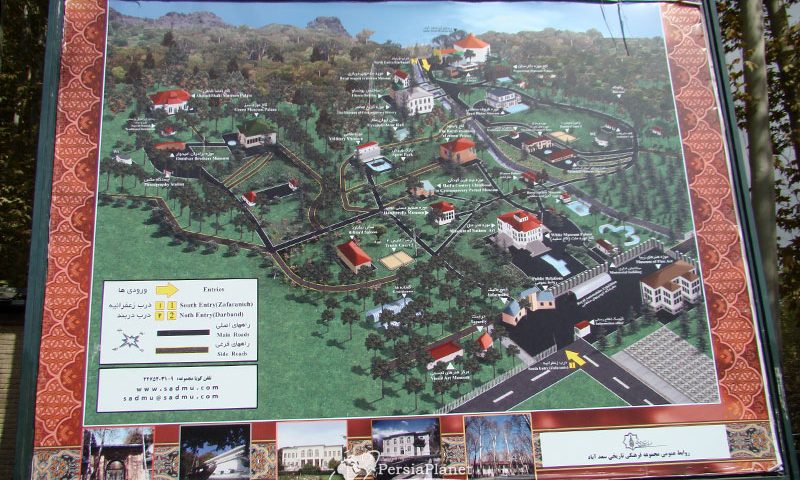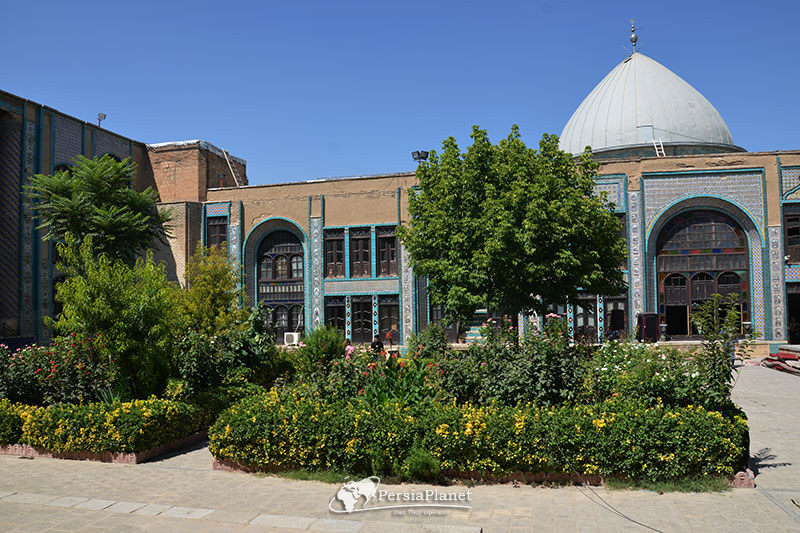Saadabad Historical Complex, Palace

Shahsevan Tribes (Nomad people in Iran, Shahsavan)
August 14, 2021
Golestan Palace
August 23, 2021The historical and cultural complex of Saad Abad Palace in Tehran was one of the summer residences of the Qajar and Pahlavi kings. Saad Abad Palace Complex is one of the three beautiful and historical palace complexes in the Shemiranat region of Tehran, where the last kings of Iran resided.
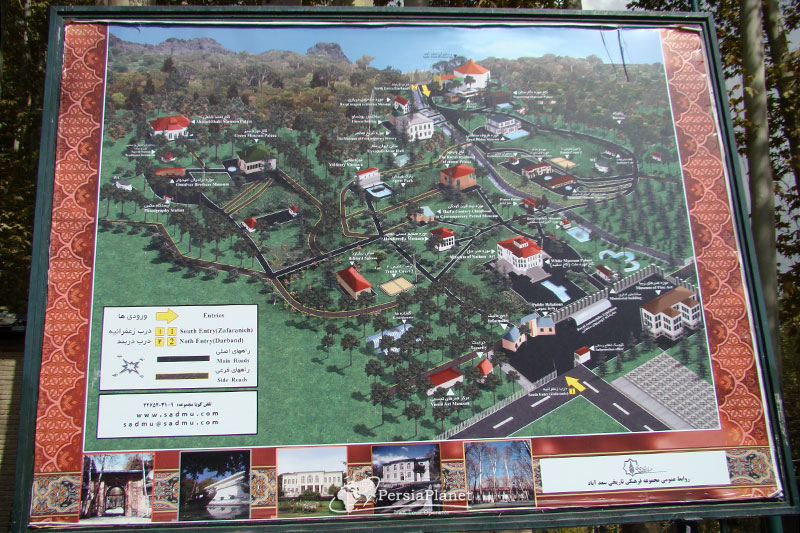
The area around Saad Abad Palace complex was covered with gardens in the past, and inside this complex there was a garden full of trees. The private palace of Saad Abad complex is the main palace of this complex and Reza Khan has increased the number of palaces and buildings of Saad Abad complex over time. The palaces built in the Saad Abad complex belonged to members of Reza Shah Pahlavi’s family, and the last palace built in the Saad Abad complex belonged to Leila Pahlavi, the youngest daughter of Mohammad Reza Shah.
Today, Saad Abad Palace complex is one of the most prominent places in Tehran and domestic and foreign tourists visit this beautiful complex with historical, cultural and natural attractions during their trip to Tehran.
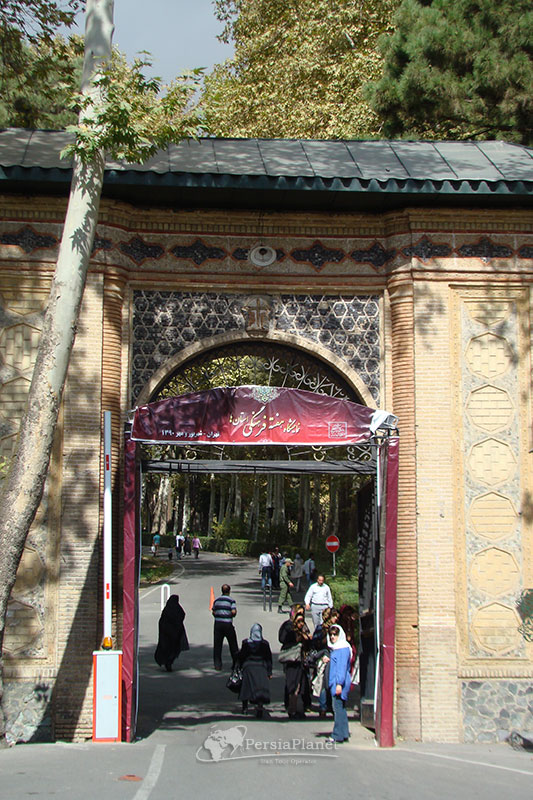
History of Saadabad Historical Complex
Saad Abad Palace was built during the Qajar period. With the coming to power of the Pahlavi dynasty, the buildings in the Saad Abad complex were built and rebuilt by order of Reza Khan. Parts of the Saad Abad complex were outside the complex, purchased by Reza Shah and added to the Saad Abad complex. The first buildings in Saad Abad complex were located in an area of 8000 square meters and the Queen Mother Palace was one of the first buildings available. Saad Abad complex is currently the largest historical complex left from the Pahlavi and Qajar periods in Tehran.
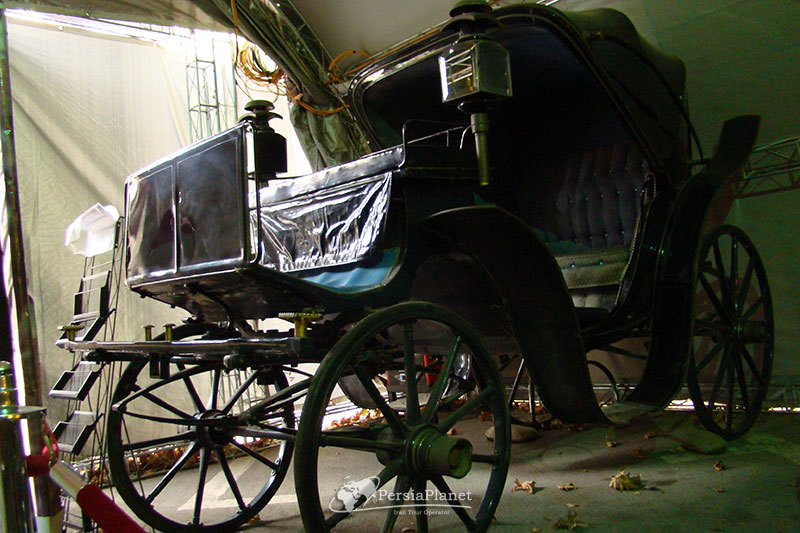
Where is Saad Abad Palace in Tehran?
Saad Abad Palace complex is one of the most important sights of Tehran province in the northernmost part of Tehran and on the foothills of Tochal peak. The environment area on Saad Abad complex, in the past, was one of the best summers in Tehran and overlooks the green valley of Darband and has a mild climate and tree nature. Urban constructions have expanded over time, and today the Saadabad Palace complex is located within the city; But in the past, this palace was among the gardens and outside the city limits.
The northern regions of Niavaran to the east, Velenjak to the west and Tajrish to the south surround the Saadabad Palace complex. In the northern part of this complex, Tochal Mountain is located in the Alborz Mountains. During the Qajar and Pahlavi dynasties, the Saadabad palace complex was a resting place and summer summer for kings.
Address of Saad Abad Palace
Saad Abad Palace complex is located in the north of Tehran and depending on your area of residence or stay in the capital, you can go to Saad Abad Palace from different routes; It is enough to reach Zafaranieh Street through the nearest route and then enter Taheri Street. Taheri Street is located on the eastern side and in the middle of Shahid Fallahi or Zafaranieh Street. Saad Abad Palace complex has two entrances in Zafaranieh and Darband streets.
Address from Zafaranieh St.: Valiasr St., Shahid Fallahi St. (Zafaranieh), end of Shahid Kamal Taheri St., Saad Abad Cultural and Historical Complex (see on the map)
Address from Tajrish Square and Darband Street: Tajrish Square, Shahid Jafari Street, south side of Darband Square, Saad Abad Complex
Saad Abad historical and cultural collection website: sadmu.ir
Visiting time of Saad Abad Palace
Visiting hours: the first six months of the year from 8:30 AM to 7:30 PM and the second half of the year from 8:30 AM to 5 PM
Holidays: Tasua and Ashura mourning days, the death of Hazrat Mohammad, Imam Reza, Hazrat Fatemeh and June 4 and 5
Religious holidays are based on the Arabic calendar and change every year according to the normal calendar.
Mehdi Gholami.

